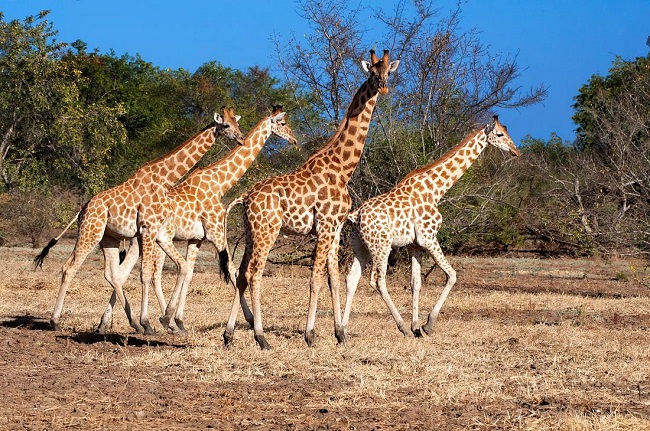A partnership between the African Wildlife Foundation and Cameroon’s government has helped increase the number of endangered Kordofan giraffes in Faro National Park from scattered sightings to 21 identified animals within two years.

The Kordofan giraffe population has declined by more than 40% over the past 30 years due to poaching and habitat loss, with animals hunted for their skin, bones and tail hairs used in traditional ceremonies and crafts.
“Giraffe conservation today requires more than just protecting a species; it demands that we rethink how we manage ecosystems under pressure,” said Dr. Philip Muruthi, vice president of species conservation and science at the African Wildlife Foundation.
“The Kordofan giraffe, with its shrinking range and dwindling numbers, is a signal that the systems we rely on are under stress.”
The conservation program, supported by the European Union and other donors, focuses on tracking giraffe populations, restoring habitats through science-based monitoring and working with local conservation leaders and ecoguards.
In 2021, Kordofan giraffes were spotted in only a few locations within the park. By 2023, conservationists had identified 21 giraffes across a larger area through increased patrols and monitoring tools, including camera traps.
“Every giraffe we identify is a sign that protection is possible when the people closest to the problem are also part of the solution,” said Anthony Agbor, AWF’s Faro Landscape Director.
“We’re not managing wildlife in isolation; we’re managing a future for this landscape.”
The giraffes face additional pressure from seasonal cattle migrations that displace them from their habitat.
Northern Cameroon’s Faro National Park represents one of the last remaining habitats for the subspecies.
As browsers reaching up to 18 feet tall, giraffes help maintain ecosystem health by shaping vegetation and spreading seeds that support plant growth and biodiversity across the park.
The African Wildlife Foundation works across multiple African countries to protect giraffes, having secured critical habitats for over 24% of Africa’s remaining giraffes to reach 82% by 2030.
The organisation’s strategy includes habitat protection, anti-poaching efforts, community engagement, research and policy support, with emphasis on training local wildlife scouts and monitors.
“The story of the Kordofan giraffe in Faro is not just one of survival; it’s about rebuilding trust between people, wildlife, and the land,” Agbor said.
“Our progress didn’t come from chance; it came from sustained presence, consistent monitoring, and local partnerships that respect both ecological needs and community realities.”
Muruthi cautioned that long-term success requires continued investment and policy coordination across giraffe range states.
“What’s happening in Faro is encouraging, but it also reminds us that recovery is fragile without long-term investment and policy coherence across Africa’s giraffe range states,” he said.
